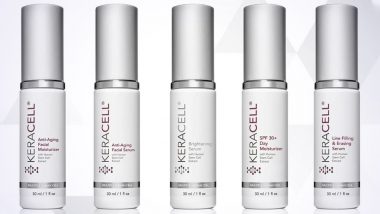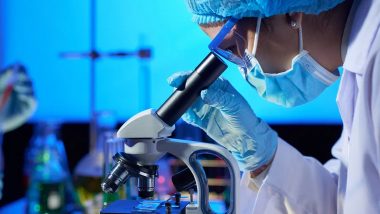Human stem cell research is an ever-evolving field of science, and for many years, the label of “stem cell” has brought with it a whole ethical debate. This is still a huge obstacle that many beauty brands are trying to clear, with people often believing myths and misconceptions surrounding the science, which are entirely untrue. This has unfortunately caused topically applied stem cell extract usage within the beauty industry to progress at a much slower rate than many other innovative skin and hair care technologies.
A large part of the job as CEO of the beauty brand Keracell®, is sharing the science and educating consumers on the product ingredient information behind the results driven line. Each product within the Keracell® line is uniquely formulated using Multiple Human Cell Stem Cell Technology (MHCsc)™ derived from the combination of fibroblasts and mesenchymal cells, utilizing exosome delivery. This terminology makes a lot more sense for the people at the front line of the formulation, meaning accessible human stem cell extract information is still somewhat elusive.
This article seeks to clarify common misconceptions surrounding topically applied human stem cell extract based products. Below are four common misconceptions about human stem cell extract based beauty products. These misconceptions often prevent people from understanding the innovation behind these truly powerful skin and hair formulations, causing those consumers to miss out on the immense benefits.
“Human stem cell extract comes from aborted babies”
Fetal tissue is used in some stem cell research, and while there have been a limited number of controversies where products have included skin cell proteins, it has absolutely no link to the extract used in the majority of beauty products with human stem cell extract. Keracell® utilizes a cell free, non-embryonic extract sourced from fibroblast and mesenchymal conditioned media. Put simply, there is no human DNA whatsoever within the products, but rather the extract which is grown around the human starting material.
“Human stem cell extract requires injection into the body”
While some stem cells research does involve injections for certain medical conditions, stem cell extract in beauty products is completely non-invasive. Beauty products with human stem cell extract are designed for the purpose of improving hair and skin through topical application. Beauty professionals, plastic surgeons and dermatologists have found the products to be particularly effective when used alongside surgical procedures, such as injectables and micro-needling with platelet-rich plasma. This is a true benefit to physicians’ patients, as a tool to lessen downtime and help to speed up the healing process of many ablative procedures.
“Stem cell research is unregulated”
Despite what some people would lead you to believe, stem cell research is not on the verge of going down a dangerous and lawless path. As detailed by the University of Michigan’s stem cell research center, federal laws (National Institutes of Health, Food and Drug Administration, Institutional Review boards and more), regulate human stem cell research. More importantly, this refers to cutting edge research into new medical uses for stem cells. In addition, any major beauty brand will ensure their starting materials undergo multiple rigorous safety and efficacy tests.
“Using human stem cell extract is unethical”
Mesenchymal cells do not carry the ethical stigma of embryonic stem cells, because they are not sourced from a human fetus. Mesenchymal cells target skin imperfections as if they were a wound, which is why many recognize their efficacy in improving skin imperfections like fine lines, large pores, inflammation and discoloration as well as even targeting hair loss.
Ekin Ozlen is the CEO of Keracell® which utilizes Multiple Human Cell Stem Cell Technology (MHCsc)™ Technology developed by two Ph.D biomedical scientists with expertise in stem cell research and cancer molecular biology. Clinical strength formulas are based on years of research and formulation expertise.
This article is intended to be used for educational purposes only. Information in this article is not a substitute for medical or dermatological advice.














 Quickly
Quickly



















